Central Auckland, Central Lakes, Dunedin - South Otago, East Auckland, Nelson Marlborough, North Auckland, South Auckland, Southland, Wellington, West Auckland, Waitaki > Private Hospitals & Specialists >
Skin Institute
Private Service, Dermatology, ENT/ Head & Neck Surgery, General Surgery, Specialised Primary Healthcare - Cosmetic Medicine, Specialised Primary Healthcare - Skin Cancer, Specialised Primary Healthcare - Vein Treatment
Description
They also perform Mohs Micrographic Surgery, the most advanced and sophisticated method of treating skin cancer on the face. This method achieves cure rates that are higher than any other technique.
Their team provide the latest advanced technology for treating all types of veins including micro-sclerotherapy, ultrasound guided sclerotherapy (UGS), endovenous ablation (EVLA) and varicose vein surgery. Their experienced team includes sonographers, physicians and specialist vein surgeons.
They also have a particular focus on all aspects of ‘appearance’, from facial rejuvenation treatments to cosmetic injectables. Their team of experienced cosmetic doctors and registered nurses perform a comprehensive range of procedures and also lead the way with innovative procedures in appearance medicine including Thread Lifts, Platelet Rich Plasma and Fat Freezing.
To read more about our certification, click here.
- Skin Biopsy
- Spot Checks
- Full Body Skin Check
- Cryotherapy
- Photodynamic Therapy
- Excisions
- Surgical Removal
- Mohs/CCPDMA Surgery
- Botox®
- Dermal Fillers
- Profhilo®
- Dermal Needling
- LED Light Therapy
- Intense Pulsed Light (IPL)
- Microdermabrasion
- Laser for skin rejuvenation
- Peels
- Cosmelan Peel
- Cooltech Fat reduction
- Spider Vein Treatments
- Thread Lifts
- Platelet Rich Plasma Transfer for Facial Rejuvenation
- Platelet Rich Plasma Transfer for Hair Loss
Consultants
Note: Please note below that some people are not available at all locations.
-
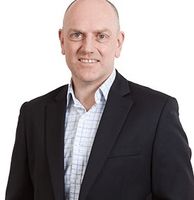
Mr Stephen Benson
General Surgeon, Oncoplastic Breast Surgeon, Phlebologist
Available at 125 Remuera Road, Remuera, Auckland
-

Mr Isaac Cranshaw
General Surgeon
Available at 398 Lake Road, Takapuna, 125 Remuera Road, Remuera, Auckland, Tōtara Health, 1 McCrae Way, New Lynn, Auckland
-
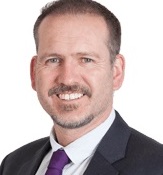
Mr Mark Izzard
Head & Neck Surgeon
Available at 398 Lake Road, Takapuna, 3 St Marys Road, Ponsonby, 153 Oceanview Road, Waiheke Island, Remarkables Park Shopping Centre, 12 Hawthorne Drive, Frankton, Queenstown
-
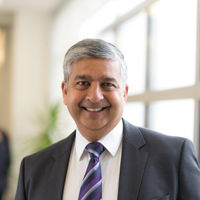
Mr Dilip Naik
Vascular & Endovascular Surgeon
Available at Cnr Customhouse Quay & Panama Street, Wellington
-

Mr Rajan Patel
Head & Neck Surgeon
Available at 398 Lake Road, Takapuna
-

Dr Kenneth Wong
Dermatologist
Available at 398 Lake Road, Takapuna, 3 St Marys Road, Ponsonby, 125 Remuera Road, Remuera, Auckland, Tōtara Health, 1 McCrae Way, New Lynn, Auckland, Cnr Customhouse Quay & Panama Street, Wellington
Doctors
Note: Please note below that some people are not available at all locations.
-

Dr Ricki-Lea Aitchison
Dermatology Associate
Available at Cnr Customhouse Quay & Panama Street, Wellington, 355 Lower Queen Street, Richmond
-

Dr Samrata Anand (Narayan)
Dermatology Associate
Available at 125 Remuera Road, Remuera, Auckland
-

Dr Duncan Bayne
Plastic Surgeon
Available at Cnr Customhouse Quay & Panama Street, Wellington
-
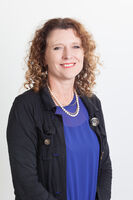
Dr Suzanne Cutmore
Dermatology Associate
Available at 3 St Marys Road, Ponsonby, 125 Remuera Road, Remuera, Auckland, Tōtara Health, 1 McCrae Way, New Lynn, Auckland, 355 Lower Queen Street, Richmond
-

Dr Shona Dalzell
Skin Cancer Doctor, Phlebologist, Appearance Medicine Doctor
Available at Cnr Customhouse Quay & Panama Street, Wellington, 355 Lower Queen Street, Richmond
-

Dr Stuart Farmer
Dermatology Associate
Available at 4 Silverdale St, Silverdale, Tōtara Health, 1 McCrae Way, New Lynn, Auckland, NorthWest Shopping Centre, 1/46 Maki Street, Massey, Auckland
-
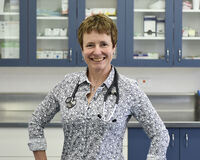
Dr Krystyna Foulkes
Dermatology Associate
Not available on location.
-

Dr Ben Gaunt
Dermatology Associate
Available at 398 Lake Road, Takapuna
-
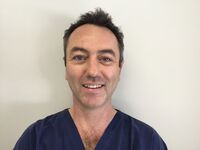
Dr Simon Harbinson
Dermatology Associate
Available at 355 Lower Queen Street, Richmond
-
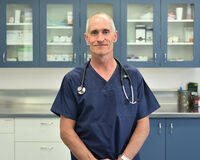
Dr Lester Kelly
Dermatology Associate
Not available on location.
-
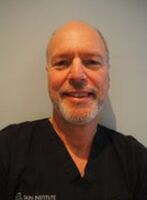
Dr Erich Kusel
Dermatology Associate
Available at Cnr Customhouse Quay & Panama Street, Wellington
-
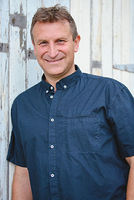
Dr Jens-Peter Link
Dermatology Associate
Available at 153 Oceanview Road, Waiheke Island
-

Dr Piergiovanni Marzinotto
Appearance Medicine Doctor
Available at 398 Lake Road, Takapuna, 3 St Marys Road, Ponsonby
-

Dr Anne Mathieson
Dermatology Associate
Available at 3 St Marys Road, Ponsonby
-
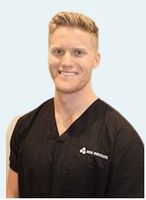
Dr Sam Mayhew
Dermatology Associate
Available at 398 Lake Road, Takapuna, 61 Constellation Drive, Rosedale, NorthWest Shopping Centre, 1/46 Maki Street, Massey, Auckland
-
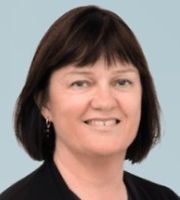
Dr Karen Parker
Dermatology Associate, Phlebologist
Available at 4 Silverdale St, Silverdale, 61 Constellation Drive, Rosedale, Tōtara Health, 1 McCrae Way, New Lynn, Auckland, NorthWest Shopping Centre, 1/46 Maki Street, Massey, Auckland
-

Dr Marcus Platts Mills
Dermatology Associate
Available at 4 Silverdale St, Silverdale, 61 Constellation Drive, Rosedale, Remarkables Park Shopping Centre, 12 Hawthorne Drive, Frankton, Queenstown, 7 York Place, Dunedin
-
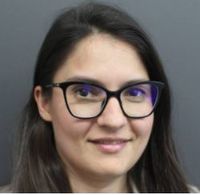
Dr Catrinel Popescu
Dermatology Associate
Available at 398 Lake Road, Takapuna, 4 Silverdale St, Silverdale, 125 Remuera Road, Remuera, Auckland, Tōtara Health, 1 McCrae Way, New Lynn, Auckland
-
Dr Hans Raetz
Dermatology Associate, Phlebologist
Available at Remarkables Park Shopping Centre, 12 Hawthorne Drive, Frankton, Queenstown, 7 York Place, Dunedin
-

Dr Megan Reilly
Dermatology Associate
Available at Remarkables Park Shopping Centre, 12 Hawthorne Drive, Frankton, Queenstown
-
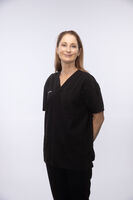
Dr Stephanie Sturm
Dermatology Associate
Available at 398 Lake Road, Takapuna, 61 Constellation Drive, Rosedale, 3 St Marys Road, Ponsonby, Cnr Customhouse Quay & Panama Street, Wellington
-

Dr Nigel Tay
Dermatology Associate
Available at 398 Lake Road, Takapuna, 125 Remuera Road, Remuera, Auckland, Tōtara Health, 1 McCrae Way, New Lynn, Auckland, NorthWest Shopping Centre, 1/46 Maki Street, Massey, Auckland
-

Dr Coran Turner
Dermatology Associate
Available at Remarkables Park Shopping Centre, 12 Hawthorne Drive, Frankton, Queenstown
-

Dr Dhivyan Vishnunadan
Dermatology Associate
Available at Tōtara Health, 1 McCrae Way, New Lynn, Auckland, NorthWest Shopping Centre, 1/46 Maki Street, Massey, Auckland
-

Dr William Zeng
Dermatology Associate
Available at 398 Lake Road, Takapuna, 125 Remuera Road, Remuera, Auckland, 7 York Place, Dunedin
Fees and Charges Description
The Skin Institute is an Affiliated Provider to Southern Cross Health Society for selected skin cancer and vein treatment where medical necessity criteria apply. Please click here to read more.
Procedures / Treatments
New Zealand has a very high rate of skin cancer, when compared to other countries. The most common forms of skin cancer usually appear on areas of skin that have been over-exposed to the sun. Risk factors for developing skin cancer are: prolonged exposure to the sun; people with fair skin; and possibly over-exposure to UV light from sun beds. There are three main types of skin cancers: basal cell carcinoma, squamous cell carcinoma and malignant melanoma. Basal Cell Carcinoma (BCC) This is the most common type and is found on skin surfaces that are exposed to sun. A BCC remains localised and does not usually spread to other areas of the body. Sometimes BCC’s can ulcerate and scab so it is important not to mistake it for a sore. BCCs occur more commonly on the face, back of hands and back. They appear usually as small, red lumps that don’t heal and sometimes bleed or become itchy. They have the tendency to change in size and sometimes in colour. Treatment Often a BCC can be diagnosed just by its appearance. In other cases it will be removed totally and sent for examination and diagnosis, or a biopsy may be taken and just a sample sent for diagnosis. Removal of a BCC will require an appointment with a doctor or surgeon. It will be termed minor surgery and will require a local anaesthetic (numbing of the area) and possibly some stitches. A very small number of BCCs will require a general anaesthetic (you will sleep through the operation) for removal. Squamous Cell Carcinoma (SCC) This type of skin cancer also affects areas of the skin that have exposure to the sun. The most common area is the face, but an SCC can also affect other parts of the body and can spread to other parts of the body. The spreading (metastasising) can potentially be fatal if not successfully treated. A SCC usually begins as a keratosis that looks like an area of thickened scaly skin, it may then develop into a raised, hard lump which enlarges. SCCs can sometimes be painful. Often the edges are irregular and it can appear wart like, the colour can be reddish brown. Sometimes it can appear like a recurring ulcer that does not heal. All SCCs will need to be removed, because of their potential for spread. The removal and diagnosis is the same as for a BCC. Malignant Melanoma This is the most serious form of skin cancer. It can spread to other parts of the body and people can die from this disease. A melanoma usually starts as a pigmented growth on normal skin. They often, but not always, occur on areas that have high sun exposure. In some cases, a melanoma may develop from existing pigmented moles. What to look for: an existing mole that changes colour (it may be black, dark blue or even red and white) the colour pigment may be uneven the edges of the mole/freckle may be irregular and have a spreading edge the surface of the mole/freckle may be flaky/crusted and raised sudden growth of an existing or new mole/freckle inflammation and or itchiness surrounding an existing or new mole/freckle. Treatment It is important that any suspect moles or freckles are checked by a GP or a dermatologist. The sooner a melanoma is treated, there is less chance of it spreading. A biopsy or removal will be carried out depending on the size of the cancer. Tissue samples will be sent for examination, as this will aid in diagnosis and help determine the type of treatment required. If the melanoma has spread more surgery may be required to take more of the affected skin. Samples from lymph nodes that are near to the cancer may be tested for spread, then chemotherapy or radiotherapy may be required to treat this spread. Once a melanoma has been diagnosed, a patient may be referred to an oncologist (a doctor who specialises in cancer). A melanoma that is in the early stages can be treated more successfully and cure rates are much higher than one that has spread.
New Zealand has a very high rate of skin cancer, when compared to other countries. The most common forms of skin cancer usually appear on areas of skin that have been over-exposed to the sun. Risk factors for developing skin cancer are: prolonged exposure to the sun; people with fair skin; and possibly over-exposure to UV light from sun beds. There are three main types of skin cancers: basal cell carcinoma, squamous cell carcinoma and malignant melanoma. Basal Cell Carcinoma (BCC) This is the most common type and is found on skin surfaces that are exposed to sun. A BCC remains localised and does not usually spread to other areas of the body. Sometimes BCC’s can ulcerate and scab so it is important not to mistake it for a sore. BCCs occur more commonly on the face, back of hands and back. They appear usually as small, red lumps that don’t heal and sometimes bleed or become itchy. They have the tendency to change in size and sometimes in colour. Treatment Often a BCC can be diagnosed just by its appearance. In other cases it will be removed totally and sent for examination and diagnosis, or a biopsy may be taken and just a sample sent for diagnosis. Removal of a BCC will require an appointment with a doctor or surgeon. It will be termed minor surgery and will require a local anaesthetic (numbing of the area) and possibly some stitches. A very small number of BCCs will require a general anaesthetic (you will sleep through the operation) for removal. Squamous Cell Carcinoma (SCC) This type of skin cancer also affects areas of the skin that have exposure to the sun. The most common area is the face, but an SCC can also affect other parts of the body and can spread to other parts of the body. The spreading (metastasising) can potentially be fatal if not successfully treated. A SCC usually begins as a keratosis that looks like an area of thickened scaly skin, it may then develop into a raised, hard lump which enlarges. SCCs can sometimes be painful. Often the edges are irregular and it can appear wart like, the colour can be reddish brown. Sometimes it can appear like a recurring ulcer that does not heal. All SCCs will need to be removed, because of their potential for spread. The removal and diagnosis is the same as for a BCC. Malignant Melanoma This is the most serious form of skin cancer. It can spread to other parts of the body and people can die from this disease. A melanoma usually starts as a pigmented growth on normal skin. They often, but not always, occur on areas that have high sun exposure. In some cases, a melanoma may develop from existing pigmented moles. What to look for: an existing mole that changes colour (it may be black, dark blue or even red and white) the colour pigment may be uneven the edges of the mole/freckle may be irregular and have a spreading edge the surface of the mole/freckle may be flaky/crusted and raised sudden growth of an existing or new mole/freckle inflammation and or itchiness surrounding an existing or new mole/freckle. Treatment It is important that any suspect moles or freckles are checked by a GP or a dermatologist. The sooner a melanoma is treated, there is less chance of it spreading. A biopsy or removal will be carried out depending on the size of the cancer. Tissue samples will be sent for examination, as this will aid in diagnosis and help determine the type of treatment required. If the melanoma has spread more surgery may be required to take more of the affected skin. Samples from lymph nodes that are near to the cancer may be tested for spread, then chemotherapy or radiotherapy may be required to treat this spread. Once a melanoma has been diagnosed, a patient may be referred to an oncologist (a doctor who specialises in cancer). A melanoma that is in the early stages can be treated more successfully and cure rates are much higher than one that has spread.
New Zealand has a very high rate of skin cancer, when compared to other countries. The most common forms of skin cancer usually appear on areas of skin that have been over-exposed to the sun.
Risk factors for developing skin cancer are: prolonged exposure to the sun; people with fair skin; and possibly over-exposure to UV light from sun beds.
There are three main types of skin cancers: basal cell carcinoma, squamous cell carcinoma and malignant melanoma.
Basal Cell Carcinoma (BCC)
This is the most common type and is found on skin surfaces that are exposed to sun. A BCC remains localised and does not usually spread to other areas of the body. Sometimes BCC’s can ulcerate and scab so it is important not to mistake it for a sore.
BCCs occur more commonly on the face, back of hands and back. They appear usually as small, red lumps that don’t heal and sometimes bleed or become itchy. They have the tendency to change in size and sometimes in colour.
Treatment
Often a BCC can be diagnosed just by its appearance. In other cases it will be removed totally and sent for examination and diagnosis, or a biopsy may be taken and just a sample sent for diagnosis.
Removal of a BCC will require an appointment with a doctor or surgeon. It will be termed minor surgery and will require a local anaesthetic (numbing of the area) and possibly some stitches. A very small number of BCCs will require a general anaesthetic (you will sleep through the operation) for removal.
Squamous Cell Carcinoma (SCC)
This type of skin cancer also affects areas of the skin that have exposure to the sun. The most common area is the face, but an SCC can also affect other parts of the body and can spread to other parts of the body. The spreading (metastasising) can potentially be fatal if not successfully treated.
A SCC usually begins as a keratosis that looks like an area of thickened scaly skin, it may then develop into a raised, hard lump which enlarges. SCCs can sometimes be painful. Often the edges are irregular and it can appear wart like, the colour can be reddish brown. Sometimes it can appear like a recurring ulcer that does not heal.
All SCCs will need to be removed, because of their potential for spread. The removal and diagnosis is the same as for a BCC.
Malignant Melanoma
This is the most serious form of skin cancer. It can spread to other parts of the body and people can die from this disease.
A melanoma usually starts as a pigmented growth on normal skin. They often, but not always, occur on areas that have high sun exposure. In some cases, a melanoma may develop from existing pigmented moles.
What to look for:
- an existing mole that changes colour (it may be black, dark blue or even red and white)
- the colour pigment may be uneven
- the edges of the mole/freckle may be irregular and have a spreading edge
- the surface of the mole/freckle may be flaky/crusted and raised
- sudden growth of an existing or new mole/freckle
- inflammation and or itchiness surrounding an existing or new mole/freckle.
Treatment
It is important that any suspect moles or freckles are checked by a GP or a dermatologist. The sooner a melanoma is treated, there is less chance of it spreading.
A biopsy or removal will be carried out depending on the size of the cancer. Tissue samples will be sent for examination, as this will aid in diagnosis and help determine the type of treatment required. If the melanoma has spread more surgery may be required to take more of the affected skin. Samples from lymph nodes that are near to the cancer may be tested for spread, then chemotherapy or radiotherapy may be required to treat this spread.
Once a melanoma has been diagnosed, a patient may be referred to an oncologist (a doctor who specialises in cancer).
A melanoma that is in the early stages can be treated more successfully and cure rates are much higher than one that has spread.
These are bulging veins that lie just beneath the skin (superficial veins). They occur when the walls of a vein are weak or damaged or if the valves in the vein that normally stop the blood from flowing backwards are impaired, resulting in pooling of the blood and stretched veins. Besides being unattractive, varicose veins can be painful and cause inflammation or ulceration. The following different types of treatments are available for varicose veins: EVA - Endovenous Laser Ablation Endovenous Ablation is a technique for destroying the larger faulty veins. This procedure was developed in 1999 and worldwide, hundreds of thousands of patients have been treated with EVA. The procedure is performed under local anaesthetic thus avoiding the unnecessary risk of a general anaesthetic. It is “Walk in, Walk out” technique and you can return to work the same day if you wish. UGS – Ultrasound Guided Sclerotherapy Ultrasound Guided Sclerotherapy (UGS), also commonly known as injection treatment, is a non-surgical treatment for varicose veins that are not suitable for Endovenous Ablation. The treatment involves injecting a special solution into the veins, using ultrasound guidance that causes the vein wall to become irritated and collapse. The veins dissolve and disappear over three to six months as the body absorbs them. Ultrasound Guided Sclerotherapy (UGS) is particularly effective for recurrent varicose veins. Good results have been achieved with closure rates close to 90% at one year. Microsclerotherapy Sclerotherapy is a non-surgical way to shrink away those unsightly spider veins, preventing them from causing you any discomfort or embarrassment. Sclerotherapy treats spider veins by injecting a special sclerosant solution into the veins, damaging, shrinking, collapsing and dissolving them, helping to ease your mind from the stress that spider veins can bring and improve the cosmetic appearance of your legs.
These are bulging veins that lie just beneath the skin (superficial veins). They occur when the walls of a vein are weak or damaged or if the valves in the vein that normally stop the blood from flowing backwards are impaired, resulting in pooling of the blood and stretched veins. Besides being unattractive, varicose veins can be painful and cause inflammation or ulceration. The following different types of treatments are available for varicose veins: EVA - Endovenous Laser Ablation Endovenous Ablation is a technique for destroying the larger faulty veins. This procedure was developed in 1999 and worldwide, hundreds of thousands of patients have been treated with EVA. The procedure is performed under local anaesthetic thus avoiding the unnecessary risk of a general anaesthetic. It is “Walk in, Walk out” technique and you can return to work the same day if you wish. UGS – Ultrasound Guided Sclerotherapy Ultrasound Guided Sclerotherapy (UGS), also commonly known as injection treatment, is a non-surgical treatment for varicose veins that are not suitable for Endovenous Ablation. The treatment involves injecting a special solution into the veins, using ultrasound guidance that causes the vein wall to become irritated and collapse. The veins dissolve and disappear over three to six months as the body absorbs them. Ultrasound Guided Sclerotherapy (UGS) is particularly effective for recurrent varicose veins. Good results have been achieved with closure rates close to 90% at one year. Microsclerotherapy Sclerotherapy is a non-surgical way to shrink away those unsightly spider veins, preventing them from causing you any discomfort or embarrassment. Sclerotherapy treats spider veins by injecting a special sclerosant solution into the veins, damaging, shrinking, collapsing and dissolving them, helping to ease your mind from the stress that spider veins can bring and improve the cosmetic appearance of your legs.
These are bulging veins that lie just beneath the skin (superficial veins). They occur when the walls of a vein are weak or damaged or if the valves in the vein that normally stop the blood from flowing backwards are impaired, resulting in pooling of the blood and stretched veins. Besides being unattractive, varicose veins can be painful and cause inflammation or ulceration.
The following different types of treatments are available for varicose veins:
EVA - Endovenous Laser Ablation
Endovenous Ablation is a technique for destroying the larger faulty veins. This procedure was developed in 1999 and worldwide, hundreds of thousands of patients have been treated with EVA. The procedure is performed under local anaesthetic thus avoiding the unnecessary risk of a general anaesthetic. It is “Walk in, Walk out” technique and you can return to work the same day if you wish.
UGS – Ultrasound Guided Sclerotherapy
Ultrasound Guided Sclerotherapy (UGS), also commonly known as injection treatment, is a non-surgical treatment for varicose veins that are not suitable for Endovenous Ablation. The treatment involves injecting a special solution into the veins, using ultrasound guidance that causes the vein wall to become irritated and collapse. The veins dissolve and disappear over three to six months as the body absorbs them. Ultrasound Guided Sclerotherapy (UGS) is particularly effective for recurrent varicose veins. Good results have been achieved with closure rates close to 90% at one year.
Microsclerotherapy
Sclerotherapy is a non-surgical way to shrink away those unsightly spider veins, preventing them from causing you any discomfort or embarrassment. Sclerotherapy treats spider veins by injecting a special sclerosant solution into the veins, damaging, shrinking, collapsing and dissolving them, helping to ease your mind from the stress that spider veins can bring and improve the cosmetic appearance of your legs.
Skin Institute has a wide variety of appearance medicine treatments including cosmetic injectables & dermal fillers, IPL, microdermabrasion, peels including Cosmelan, LED light therapy, Skin needling, Platelet Rich Plasma Transfer and more. As everyone has different skin and different concerns, a carefully tailored treatment plan will be recommended to address individual concerns.
Skin Institute has a wide variety of appearance medicine treatments including cosmetic injectables & dermal fillers, IPL, microdermabrasion, peels including Cosmelan, LED light therapy, Skin needling, Platelet Rich Plasma Transfer and more. As everyone has different skin and different concerns, a carefully tailored treatment plan will be recommended to address individual concerns.
Skin Institute has a wide variety of appearance medicine treatments including cosmetic injectables & dermal fillers, IPL, microdermabrasion, peels including Cosmelan, LED light therapy, Skin needling, Platelet Rich Plasma Transfer and more. As everyone has different skin and different concerns, a carefully tailored treatment plan will be recommended to address individual concerns.
Acne is a skin disorder that is characterised by pimples, blackheads, whiteheads, and, in bad cases, cysts (deeper lumps). Acne usually starts at puberty and is in response to our body’s production of hormones, called androgens. These hormones cause the sebaceous glands (oil-producing glands in the skin) to get bigger and produce more oil. The extra oil (sebum) mixes with dead skin cells and naturally occurring bacteria on the surface of the skin and blocks pores. Once a pore is blocked the bacteria multiply and cause inflammation, which produces the characteristic signs of acne. Acne commonly occurs on the face, neck, back and chest. Acne can lead to permanent scarring. Other causes of acne may include: genetics heavy makeup harsh and repetitive cleansing picking and squeezing certain medications diet Acne Vulgaris is the most common form of acne. Adult Acne occurs in about 30% of people at some stage in their adult life. It is thought that adult acne also has some hormonal influences. Acne Roseaca is similar to acne vulgaris, with oily skin and spots, but also has flushing or redness of the skin in the affected area. The flush may be set off by certain spicy food or alcohol. Treatment Usually acne can be treated successfully, but results do not happen overnight and what can work for one person may not work for another. It may take several months to see initial results, and once it significantly clears treatment is still required to keep it from coming back. Some medications for acne can only be prescribed by a dermatologist. When acne is treated early the results are very good and it also helps to reduce scarring. Over-the-counter products are available to treat mild-to-moderate acne, but check with a pharmacist which product is the best for your type of acne. In moderate-to-severe acne, treatment usually requires the help of a dermatologist and often more than one type of treatment. Treatments may include: antibiotic creamstopical (apply to your skin) retinoidsoral (take by mouth) antibiotics: these reduce the number of bacteria present on the skin which leads to a decrease in inflammationoral contraceptives: these reduce the amount of oil produced by the sebaceous glands. However, possible side effects must be taken into consideration before starting treatmentover-the-counter acne products. Severe Acne, with deep cysts, inflammation and scarring, should be treated by a dermatologist and in most cases can be successfully treated. Treatment may include: surgery: the deep cysts are removed and drainedcorticosteroid injection: used to treat the inflammation, promote healing of an acne cyst and help prevent scarringisotretinoin: an oral medication prescribed by a dermatologist that effectively works on all factors that cause acne. It can also have some side effects so you will need to be continually monitored whilst on this medicationoral antibioticsoral contraceptives.
Acne is a skin disorder that is characterised by pimples, blackheads, whiteheads, and, in bad cases, cysts (deeper lumps). Acne usually starts at puberty and is in response to our body’s production of hormones, called androgens. These hormones cause the sebaceous glands (oil-producing glands in the skin) to get bigger and produce more oil. The extra oil (sebum) mixes with dead skin cells and naturally occurring bacteria on the surface of the skin and blocks pores. Once a pore is blocked the bacteria multiply and cause inflammation, which produces the characteristic signs of acne. Acne commonly occurs on the face, neck, back and chest. Acne can lead to permanent scarring. Other causes of acne may include: genetics heavy makeup harsh and repetitive cleansing picking and squeezing certain medications diet Acne Vulgaris is the most common form of acne. Adult Acne occurs in about 30% of people at some stage in their adult life. It is thought that adult acne also has some hormonal influences. Acne Roseaca is similar to acne vulgaris, with oily skin and spots, but also has flushing or redness of the skin in the affected area. The flush may be set off by certain spicy food or alcohol. Treatment Usually acne can be treated successfully, but results do not happen overnight and what can work for one person may not work for another. It may take several months to see initial results, and once it significantly clears treatment is still required to keep it from coming back. Some medications for acne can only be prescribed by a dermatologist. When acne is treated early the results are very good and it also helps to reduce scarring. Over-the-counter products are available to treat mild-to-moderate acne, but check with a pharmacist which product is the best for your type of acne. In moderate-to-severe acne, treatment usually requires the help of a dermatologist and often more than one type of treatment. Treatments may include: antibiotic creamstopical (apply to your skin) retinoidsoral (take by mouth) antibiotics: these reduce the number of bacteria present on the skin which leads to a decrease in inflammationoral contraceptives: these reduce the amount of oil produced by the sebaceous glands. However, possible side effects must be taken into consideration before starting treatmentover-the-counter acne products. Severe Acne, with deep cysts, inflammation and scarring, should be treated by a dermatologist and in most cases can be successfully treated. Treatment may include: surgery: the deep cysts are removed and drainedcorticosteroid injection: used to treat the inflammation, promote healing of an acne cyst and help prevent scarringisotretinoin: an oral medication prescribed by a dermatologist that effectively works on all factors that cause acne. It can also have some side effects so you will need to be continually monitored whilst on this medicationoral antibioticsoral contraceptives.
Acne is a skin disorder that is characterised by pimples, blackheads, whiteheads, and, in bad cases, cysts (deeper lumps). Acne usually starts at puberty and is in response to our body’s production of hormones, called androgens. These hormones cause the sebaceous glands (oil-producing glands in the skin) to get bigger and produce more oil. The extra oil (sebum) mixes with dead skin cells and naturally occurring bacteria on the surface of the skin and blocks pores. Once a pore is blocked the bacteria multiply and cause inflammation, which produces the characteristic signs of acne.
Acne commonly occurs on the face, neck, back and chest. Acne can lead to permanent scarring.
Other causes of acne may include:
- genetics
- heavy makeup
- harsh and repetitive cleansing
- picking and squeezing
- certain medications
- diet
Acne Vulgaris is the most common form of acne.
Adult Acne occurs in about 30% of people at some stage in their adult life. It is thought that adult acne also has some hormonal influences.
Acne Roseaca is similar to acne vulgaris, with oily skin and spots, but also has flushing or redness of the skin in the affected area. The flush may be set off by certain spicy food or alcohol.
Treatment
Usually acne can be treated successfully, but results do not happen overnight and what can work for one person may not work for another. It may take several months to see initial results, and once it significantly clears treatment is still required to keep it from coming back.
Some medications for acne can only be prescribed by a dermatologist. When acne is treated early the results are very good and it also helps to reduce scarring.
Over-the-counter products are available to treat mild-to-moderate acne, but check with a pharmacist which product is the best for your type of acne. In moderate-to-severe acne, treatment usually requires the help of a dermatologist and often more than one type of treatment. Treatments may include:
antibiotic creamstopical (apply to your skin) retinoidsoral (take by mouth) antibiotics: these reduce the number of bacteria present on the skin which leads to a decrease in inflammationoral contraceptives: these reduce the amount of oil produced by the sebaceous glands. However, possible side effects must be taken into consideration before starting treatmentover-the-counter acne products.
Severe Acne, with deep cysts, inflammation and scarring, should be treated by a dermatologist and in most cases can be successfully treated.
Treatment may include:
surgery: the deep cysts are removed and drainedcorticosteroid injection: used to treat the inflammation, promote healing of an acne cyst and help prevent scarringisotretinoin: an oral medication prescribed by a dermatologist that effectively works on all factors that cause acne. It can also have some side effects so you will need to be continually monitored whilst on this medicationoral antibioticsoral contraceptives.
Seborrhoeic dermatitis This is an inflammation of the upper layers of the skin, which gradually results in dry or greasy scaling of the affected area. This type dermatitis tends to be chronic and recurrent. It occurs in both infants and adults and tends to run in families. In infants, this condition is known as ‘cradle cap’ when it occurs on the scalp, but can also affect the nappy area to cause ‘nappy eczema’. In adults, the rash tends to occur around the nose, eyebrows and scalp. Treatment Infants: wash the scalp with mild shampoo. Oil can be applied to help comb scale out. Adults: regular use of an anti-dandruff shampoo is often all that is needed. Corticosteriods can also be applied, only 1% strength to the face. Ketoconazole 1% shampoo and cream are very effective. Contact dermatitis Contact dermatitis is inflammation of the skin caused by contact with a specific substance. This happens because of irritation or by an allergic reaction. Substances that can trigger this inflammation can include cosmetics, soaps, detergents, rubber, nickel (in jewellery) or specific chemicals used in skin creams or from plants. With an allergic reaction, it is not the first exposure that causes a reaction but may be the next exposure or, in some cases, it is possible to have contact with a substance for a number of years without any skin inflammation occurring. But once the skin has become sensitive, even a tiny amount of that substance can cause a reaction. Usually contact dermatitis affects only the area that has been in contact with the trigger or irritant (item that has caused the reaction). Symptoms can vary from a mild rash to a severe rash and blisters, with subsequent scaling and itching. The severity depends on the concentration of the irritant and how long the skin was exposed to it. Once the irritant is taken away, the redness and rash usually disappear over a few days. Treatment A dermatologist can perform patch testing to find out which substances are causing the allergic reaction. This is done by placing small discs (with possible allergen-causing substance on them) on the skin and removing them after 48 hours for examination. The patches are then examined again 2 days later, to check for delayed reactions. Once the trigger has been identified, it is important to avoid it as continued exposure may cause a persistent rash, which will be difficult to treat. Treatment involves the use of steroid creams to decrease the symptoms of the reaction. With severe contact dermatitis, oral steroids or a steroid injection may be given.
Seborrhoeic dermatitis This is an inflammation of the upper layers of the skin, which gradually results in dry or greasy scaling of the affected area. This type dermatitis tends to be chronic and recurrent. It occurs in both infants and adults and tends to run in families. In infants, this condition is known as ‘cradle cap’ when it occurs on the scalp, but can also affect the nappy area to cause ‘nappy eczema’. In adults, the rash tends to occur around the nose, eyebrows and scalp. Treatment Infants: wash the scalp with mild shampoo. Oil can be applied to help comb scale out. Adults: regular use of an anti-dandruff shampoo is often all that is needed. Corticosteriods can also be applied, only 1% strength to the face. Ketoconazole 1% shampoo and cream are very effective. Contact dermatitis Contact dermatitis is inflammation of the skin caused by contact with a specific substance. This happens because of irritation or by an allergic reaction. Substances that can trigger this inflammation can include cosmetics, soaps, detergents, rubber, nickel (in jewellery) or specific chemicals used in skin creams or from plants. With an allergic reaction, it is not the first exposure that causes a reaction but may be the next exposure or, in some cases, it is possible to have contact with a substance for a number of years without any skin inflammation occurring. But once the skin has become sensitive, even a tiny amount of that substance can cause a reaction. Usually contact dermatitis affects only the area that has been in contact with the trigger or irritant (item that has caused the reaction). Symptoms can vary from a mild rash to a severe rash and blisters, with subsequent scaling and itching. The severity depends on the concentration of the irritant and how long the skin was exposed to it. Once the irritant is taken away, the redness and rash usually disappear over a few days. Treatment A dermatologist can perform patch testing to find out which substances are causing the allergic reaction. This is done by placing small discs (with possible allergen-causing substance on them) on the skin and removing them after 48 hours for examination. The patches are then examined again 2 days later, to check for delayed reactions. Once the trigger has been identified, it is important to avoid it as continued exposure may cause a persistent rash, which will be difficult to treat. Treatment involves the use of steroid creams to decrease the symptoms of the reaction. With severe contact dermatitis, oral steroids or a steroid injection may be given.
Seborrhoeic dermatitis
This is an inflammation of the upper layers of the skin, which gradually results in dry or greasy scaling of the affected area. This type dermatitis tends to be chronic and recurrent. It occurs in both infants and adults and tends to run in families. In infants, this condition is known as ‘cradle cap’ when it occurs on the scalp, but can also affect the nappy area to cause ‘nappy eczema’. In adults, the rash tends to occur around the nose, eyebrows and scalp.
Treatment
Infants: wash the scalp with mild shampoo. Oil can be applied to help comb scale out.
Adults: regular use of an anti-dandruff shampoo is often all that is needed.
Corticosteriods can also be applied, only 1% strength to the face. Ketoconazole 1% shampoo and cream are very effective.
Contact dermatitis
Contact dermatitis is inflammation of the skin caused by contact with a specific substance. This happens because of irritation or by an allergic reaction.
Substances that can trigger this inflammation can include cosmetics, soaps, detergents, rubber, nickel (in jewellery) or specific chemicals used in skin creams or from plants.
With an allergic reaction, it is not the first exposure that causes a reaction but may be the next exposure or, in some cases, it is possible to have contact with a substance for a number of years without any skin inflammation occurring. But once the skin has become sensitive, even a tiny amount of that substance can cause a reaction.
Usually contact dermatitis affects only the area that has been in contact with the trigger or irritant (item that has caused the reaction).
Symptoms can vary from a mild rash to a severe rash and blisters, with subsequent scaling and itching. The severity depends on the concentration of the irritant and how long the skin was exposed to it. Once the irritant is taken away, the redness and rash usually disappear over a few days.
Treatment
A dermatologist can perform patch testing to find out which substances are causing the allergic reaction. This is done by placing small discs (with possible allergen-causing substance on them) on the skin and removing them after 48 hours for examination. The patches are then examined again 2 days later, to check for delayed reactions. Once the trigger has been identified, it is important to avoid it as continued exposure may cause a persistent rash, which will be difficult to treat.
Treatment involves the use of steroid creams to decrease the symptoms of the reaction. With severe contact dermatitis, oral steroids or a steroid injection may be given.
Psoriasis is a common, recurring (keeps coming back) skin condition that is hard to treat. It is characterised by raised patches of skin (known as plaques) that are red, thickened and scaly that commonly occur on the elbows, knees and scalp, but can affect any parts of the body. Psoriasis usually starts out as a small spot that is excessively flaky and that gradually enlarges, then other plaques start to appear. Sometimes the flaking can be mistaken for dandruff. These areas are not always itchy. It is unusual in children and more common in adults. Psoriasis happens when new skin cells are produced at a faster rate than the dead skin cells are removed, thus excess skin cells form in thick scaly patches on top of the skin. The reason this happens is unknown, but it is known that: it may run in families; it may be triggered by infection, injury or stress; it is associated with the use of certain medications; and it is associated with psoriatic arthritis. There are different types of psoriasis and a person can have more than one type at a time. Plaque psoriasis – the most common type, which keeps recurring, or coming back, over a lifetime. It can develop at any age. Symptoms are: plaques on the elbows, knees, nails, scalp, and behind the ears. This condition can be itchy at times. When it occurs on the nails, it is associated with discolouration and pitting of the nail. Guttate psoriasis – this type is more common in children and young adults and often follows a bacterial throat infection. It appears as many coin-shaped pink scaly plaques usually covering the back and chest. It can be itchy. Guttate psoriasis usually disappears over time and does not recur, although if someone has guttate psoriasis they are more likely to go on to get other types of psoriasis at a later stage. Pustular psoriasis – a rare and potentially fatal condition that generally affects adults. Symptoms are: small pus-filled blisters on palms of hands and soles of feet, with areas of skin that are painful, red and inflamed. Some scaling and thickening may be seen. Inverse psoriasis – this commonly affects the elderly. It is characterised by large moist reddened areas of skin occurring in skin folds such as the groin area, armpits and under the breasts. This type of psoriasis is easily treated, but is also recurring. Psoriasis can be hard to diagnose as other conditions have similar symptoms. To confirm a diagnosis a skin biopsy (small sample of skin is removed for examination) can be taken. Treatment Treatment can begin once a diagnosis is made and usually involves both topical (applied to the skin) and generalised treatments. There is no cure for psoriasis but treatment can control symptoms. Topical treatments: skin creams and ointments to lubricate and soften the skin corticosteroids vitamin D cream coal tar preparations salicylic acid preparations. Oral medications such as etretinate, retinoids, methotrexate or cyclosporin can be prescribed, under the guidance of a dermatologist. A generalised treatment such as ultraviolet light therapy may be effective and can be combined with an oral medication, which makes the skin more sensitive to the effects of light. This treatment is called PUVA or UVB and is given under the direction of a dermatologist.
Psoriasis is a common, recurring (keeps coming back) skin condition that is hard to treat. It is characterised by raised patches of skin (known as plaques) that are red, thickened and scaly that commonly occur on the elbows, knees and scalp, but can affect any parts of the body. Psoriasis usually starts out as a small spot that is excessively flaky and that gradually enlarges, then other plaques start to appear. Sometimes the flaking can be mistaken for dandruff. These areas are not always itchy. It is unusual in children and more common in adults. Psoriasis happens when new skin cells are produced at a faster rate than the dead skin cells are removed, thus excess skin cells form in thick scaly patches on top of the skin. The reason this happens is unknown, but it is known that: it may run in families; it may be triggered by infection, injury or stress; it is associated with the use of certain medications; and it is associated with psoriatic arthritis. There are different types of psoriasis and a person can have more than one type at a time. Plaque psoriasis – the most common type, which keeps recurring, or coming back, over a lifetime. It can develop at any age. Symptoms are: plaques on the elbows, knees, nails, scalp, and behind the ears. This condition can be itchy at times. When it occurs on the nails, it is associated with discolouration and pitting of the nail. Guttate psoriasis – this type is more common in children and young adults and often follows a bacterial throat infection. It appears as many coin-shaped pink scaly plaques usually covering the back and chest. It can be itchy. Guttate psoriasis usually disappears over time and does not recur, although if someone has guttate psoriasis they are more likely to go on to get other types of psoriasis at a later stage. Pustular psoriasis – a rare and potentially fatal condition that generally affects adults. Symptoms are: small pus-filled blisters on palms of hands and soles of feet, with areas of skin that are painful, red and inflamed. Some scaling and thickening may be seen. Inverse psoriasis – this commonly affects the elderly. It is characterised by large moist reddened areas of skin occurring in skin folds such as the groin area, armpits and under the breasts. This type of psoriasis is easily treated, but is also recurring. Psoriasis can be hard to diagnose as other conditions have similar symptoms. To confirm a diagnosis a skin biopsy (small sample of skin is removed for examination) can be taken. Treatment Treatment can begin once a diagnosis is made and usually involves both topical (applied to the skin) and generalised treatments. There is no cure for psoriasis but treatment can control symptoms. Topical treatments: skin creams and ointments to lubricate and soften the skin corticosteroids vitamin D cream coal tar preparations salicylic acid preparations. Oral medications such as etretinate, retinoids, methotrexate or cyclosporin can be prescribed, under the guidance of a dermatologist. A generalised treatment such as ultraviolet light therapy may be effective and can be combined with an oral medication, which makes the skin more sensitive to the effects of light. This treatment is called PUVA or UVB and is given under the direction of a dermatologist.
Psoriasis is a common, recurring (keeps coming back) skin condition that is hard to treat. It is characterised by raised patches of skin (known as plaques) that are red, thickened and scaly that commonly occur on the elbows, knees and scalp, but can affect any parts of the body.
Psoriasis usually starts out as a small spot that is excessively flaky and that gradually enlarges, then other plaques start to appear. Sometimes the flaking can be mistaken for dandruff. These areas are not always itchy. It is unusual in children and more common in adults.
Psoriasis happens when new skin cells are produced at a faster rate than the dead skin cells are removed, thus excess skin cells form in thick scaly patches on top of the skin. The reason this happens is unknown, but it is known that: it may run in families; it may be triggered by infection, injury or stress; it is associated with the use of certain medications; and it is associated with psoriatic arthritis.
There are different types of psoriasis and a person can have more than one type at a time.
Plaque psoriasis – the most common type, which keeps recurring, or coming back, over a lifetime. It can develop at any age. Symptoms are: plaques on the elbows, knees, nails, scalp, and behind the ears. This condition can be itchy at times. When it occurs on the nails, it is associated with discolouration and pitting of the nail.
Guttate psoriasis – this type is more common in children and young adults and often follows a bacterial throat infection. It appears as many coin-shaped pink scaly plaques usually covering the back and chest. It can be itchy. Guttate psoriasis usually disappears over time and does not recur, although if someone has guttate psoriasis they are more likely to go on to get other types of psoriasis at a later stage.
Pustular psoriasis – a rare and potentially fatal condition that generally affects adults. Symptoms are: small pus-filled blisters on palms of hands and soles of feet, with areas of skin that are painful, red and inflamed. Some scaling and thickening may be seen.
Inverse psoriasis – this commonly affects the elderly. It is characterised by large moist reddened areas of skin occurring in skin folds such as the groin area, armpits and under the breasts. This type of psoriasis is easily treated, but is also recurring.
Psoriasis can be hard to diagnose as other conditions have similar symptoms. To confirm a diagnosis a skin biopsy (small sample of skin is removed for examination) can be taken.
Treatment
Treatment can begin once a diagnosis is made and usually involves both topical (applied to the skin) and generalised treatments. There is no cure for psoriasis but treatment can control symptoms.
Topical treatments:
- skin creams and ointments to lubricate and soften the skin
- corticosteroids
- vitamin D cream
- coal tar preparations
- salicylic acid preparations.
Oral medications such as etretinate, retinoids, methotrexate or cyclosporin can be prescribed, under the guidance of a dermatologist.
A generalised treatment such as ultraviolet light therapy may be effective and can be combined with an oral medication, which makes the skin more sensitive to the effects of light. This treatment is called PUVA or UVB and is given under the direction of a dermatologist.
Services Provided
Public Transport
The Auckland Transport Journey Planner will help you to plan your journey.
Pharmacy
Website
Contact Details
398 Lake Road, Takapuna
North Auckland
-
Phone
(09) 486 7111
Healthlink EDI
skininst
Website
4 Silverdale St, Silverdale
North Auckland
-
Phone
(09) 426 0400
Healthlink EDI
skininst
Website
61 Constellation Drive, Rosedale
North Auckland
-
Phone
(09) 280 7411
Healthlink EDI
skininst
Website
3 St Marys Road, Ponsonby
Central Auckland
-
Phone
(09) 376 8888
Healthlink EDI
skininst
Website
125 Remuera Road, Remuera, Auckland
Central Auckland
-
Phone
(09) 974 1731
Healthlink EDI
skininst
Website
Tōtara Health, 1 McCrae Way, New Lynn, Auckland
West Auckland
-
Phone
(09) 974 1734
Healthlink EDI
skininst
Website
NorthWest Shopping Centre, 1/46 Maki Street, Massey, Auckland
West Auckland
-
Phone
(09) 971 1460
Healthlink EDI
skininst
Website
153 Oceanview Road, Waiheke Island
Central Auckland
-
Phone
(09) 372 2011
Healthlink EDI
skininst
Website
Cnr Customhouse Quay & Panama Street, Wellington
Wellington
-
Phone
(04) 499 8001
Healthlink EDI
skininst
Website
355 Lower Queen Street, Richmond
Nelson Marlborough
-
Phone
(03) 539 0175
Healthlink EDI
skininst
Website
Remarkables Park Shopping Centre, 12 Hawthorne Drive, Frankton, Queenstown
Central Lakes
-
Phone
(03) 442 2255
Healthlink EDI
skininst
Website
31 Tarbert Street, Alexandra
Dunedin - South Otago
-
Phone
(03) 442 2255
Healthlink EDI
skininst
Website
7 York Place, Dunedin
Dunedin - South Otago
-
Phone
(03) 477 7151
Healthlink EDI
skininst
Website
33 Gorton Street, Jacobs Town, Gore
Southland
-
Phone
(03) 442 2255
Healthlink EDI
skininst
Email
Website
Was this page helpful?
This page was last updated at 3:16PM on April 15, 2024. This information is reviewed and edited by Skin Institute.

